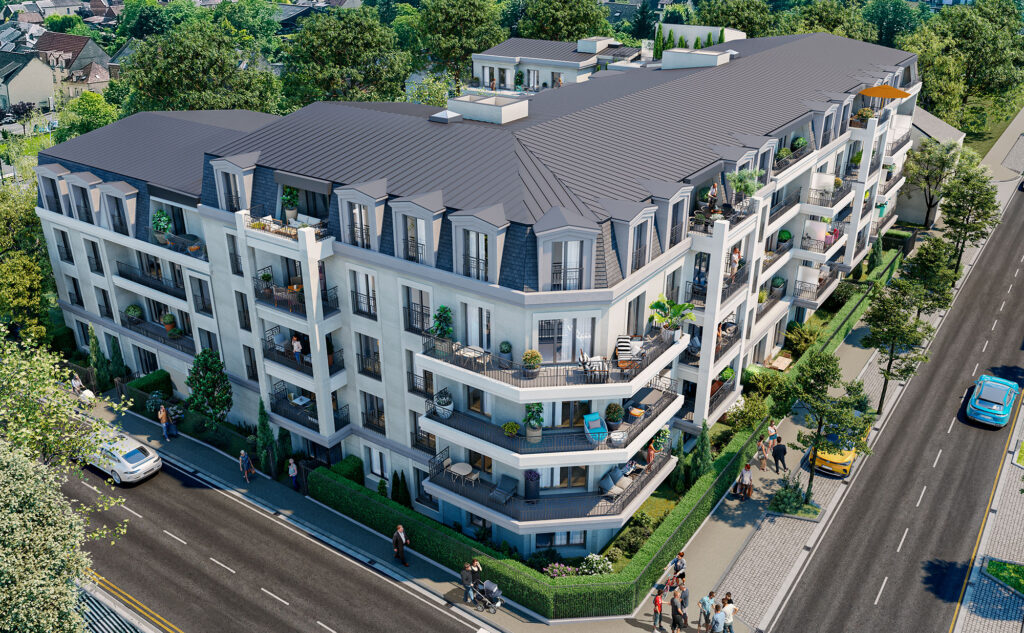3D technology has revolutionized the way companies present their products and services. More immersive, more realistic and more exciting, 3D represents the present and future of communication.
In many fields, but especially in real estate, this technology is having a positive impact on marketing. Find out more about marketing successes using 3D in this article.
The power of 3D in real estate marketing

The real estate sector is one of the biggest beneficiaries of the innovation brought about by 3D technology. The emergence of 3D has indeed become a success factor in real estate marketing.
A revolutionary tool for immersive customer experiences
3D technology has revolutionized the world of real estate, producing photorealistic images and offering potential buyers an immersive experience of unparalleled depth.
Thanks to 360° virtual tours, for example, prospects and customers can explore every nook and cranny of their future home.
With this method, customers can now discover all the information about the building and get a realistic idea of the layout, lighting and ambience of a property. It highlights the property's assets and encourages potential customers to proceed with the purchase.
The interactive features of 3D modeling products are therefore a key success factor for real estate marketing.
An effective marketing campaign method
3D renderings enable real estate agents and developers to create captivating marketing campaigns, instantly attracting the attention of potential buyers.
The property is presented in its best light, and all its features are highlighted: elegant architecture, practical interiors, charming exteriors, and so on.
In addition, photo-realistic images and personalized videos create a sense of attachment among customers to the products presented to them.
3D technology can also enhance a real estate company's online presence. A 3D model and image can be used on all digital and traditional means of communication (social networks, websites, advertising sites, brochures and catalogs).
An innovative way to present your real estate project
In real estate marketing, the key to success is the successful presentation of the project to prospects and customers. Interactive 3D vision enables real estate developers to present projects under construction in a particularly convincing way.
Thanks to this realistic virtual presentation, architectural plans come to life and customers can project themselves into the space to fully understand the property's potential.
This ability to visualize the project in its entirety generates a sense of urgency and the need to secure the project, triggering the decision to buy.
Real estate marketing success stories in 3D
In the highly competitive real estate sector, 3D technology, and more specifically 3D modeling, is an essential tool for achieving marketing objectives. Its transformative power can extend to even the largest urban planning projects.
Multiplying sales of "The Edge" residential tower units
Brooklyn's luxury residential tower "The Edge" has 565 residential units for sale.
At first, the marketing of these numerous units seemed complicated, but the developer, Douglaston Development, had the brilliant idea of calling in a 3D modeling expert for its marketing campaign.
Thanks to 3D renderings of the building, prospects were able to take virtual tours via a website, and discover the building's attractive details, such as equipment, swimming pools, various rooms and so on.
This strategy has paid off, as in the first year of the project's launch, 80% of the units have already been sold and the average price per square meter has been raised by 10%.
Showcasing "The Wave" real estate project
"The Wave" was a mixed-use development project launched in 2007 in the Gulf city of Oman. The project covered an area of 2.5 million m² and included residences, living spaces and various amenities.
Real estate developer Majid Al Futtaim decided to present the project to potential buyers using 3D technology. Interactive 3D renderings and virtual tours were used to visualize infrastructure, public spaces, landscaping, residences and leisure facilities in exceptional detail.
By highlighting the project's unique features and benefits through attractive 3D representations, the marketing team was able to convince its target audience.
The project stood out for the investment opportunities, upscale lifestyle and tourist attractions on offer. This approach has helped to draw international attention to the project and enhance its reputation as a premier destination in Muscat, Oman.
To this day, "The Wave" remains an emblem of 3D's success in large-scale project marketing.
Facilitating the marketing of properties on "The Pearl" artificial island
In Doha, Qatar, "The Pearl" island is home to luxury villas and apartments, as well as high-end stores and hotels. 3D renderings and animations played a crucial role in promoting the project.
Using computer-generated images and virtual tours, the marketing team was able to highlight the project's strong points, such as its privileged seafront location, spectacular landscaping and innovative urban planning.
Thanks to this approach, "The Pearl" has become an international commercial success. It has become a popular destination in Doha, attracting international interest.
3D, a lever for marketing success in many fields

Many companies, other than real estate firms, have enjoyed marketing success with the help of 3D. Here are just a few examples from the automotive, entertainment and consumer goods industries.
Tesla's marketing success since using 3D technology
In the automotive industry, Tesla is a prime example of the success of 3D modeling in marketing strategy.
This brand has decided to move away from traditional advertising and focus on digital marketing and online presence: buzzworthy tweets, web articles, Instagram posts, simulation videos on Youtube.
To achieve this, Tesla frequently uses 3D modeling, an initiative that enables customers to visualize the features and performance of the company's electric vehicles. It's partly thanks to this interactive method that Tesla remains a leader in its field.
Disney: phenomenal marketing success thanks to 3D technology
In the world of entertainment, Disney is one of the companies that has managed to keep the public's attention and sell cinema tickets in theaters despite the predominance of the Internet. Its biggest secret: the transition from 2D to 3D.
The immersive cinematic experiences offered by this technology have captured the interest of Disney audiences more than ever.
Based on its own experience, Disney has reported that the theatrical screening of a 3D film generates on average three times more revenue than that of a 2D film.
In addition, Disney's adoption of 3D technology has demonstrated its commitment totechnological innovation and its ability to adapt to market trends. This has helped it maintain its position as a leader in the entertainment industry.
Effective use of augmented reality in Coca-Cola ads
Since 2017, Coca-Cola has been running successful augmented reality (AR) ads. To do this, users simply had to scan specific Coca-Cola packaging using dedicated apps.
This mobile device scan unlocked interactive animations and games, creating an immersive and engaging experience.
In one of these ads, for example, consumers during the Christmas festivities could dive into the depths of the North Pole, in the company of polar bears. The result: new app users ensured the continuation of Coca-Cola's dazzling success.
Let's model your 3D real estate projects.








